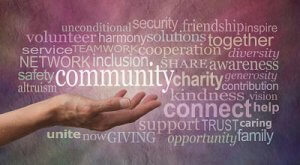Gated content
May 23, 2018
 Whether you recognize the term or not – you’ve all seen and many of you have created gated content. That term refers to putting something on your website or landing page that people want and asking them for information in exchange for that information.
Whether you recognize the term or not – you’ve all seen and many of you have created gated content. That term refers to putting something on your website or landing page that people want and asking them for information in exchange for that information.
In most cases, you are asking people for their email address and allowing them to pass through the “gate” to a hidden web page where they can download the information that you’re offering. An alternative is that you would email them the information once you have their email address.
The challenge with gated content is that you need to offer something that has great value if you want people to actually trade you information about them in exchange. The question is how many fields should you require. Studies show that the more information fields required, the fewer people you will get to actually complete the transaction. The best practice rule of thumb is no more than three fields if you want a higher conversation rate.
Every field is another barrier you are asking the person to knock down to get to your content. You are asking them to work harder and risk their anonymity with every field. They assume, for example, that if they include a phone number – you’re going to call. They have to decide if what you’re offering is worth that intrusion.
It makes sense that you would want to build a database of people who genuinely have some interest in your company or offerings. And on the surface, it makes sense that you would reduce the number of fields so more people actually finish the task and get the item you are offering in exchange.
But there’s a weird inverse relationship in this kind of marketing. As the number of people who complete the form increases, the amount of information you have on them and the more you can confidently say they are a qualified lead diminishes. Why? More hurdles to leap mean you are in essence, testing the audience to see how badly they want what you’re offering.
Remember, the more you ask them in the form, the fewer completions you will get. But the fewer things you ask, the less you know about your leads.
So when considering whether or not you should create gated content, the first question you need to ask yourself is “why are we doing this?” If you are looking for qualified sales leads then you should actually use more fields. You will get a smaller group of people who actually complete the form and access your information, but you’ll know they really want it. You will also have gathered enough information about them to get a sense of how strong a lead they are.
On the flip side, if you are just trying to build up your database so you can keep marketing to the audience, then reduce the number of fields to increase participation. But you have to accept that many of the people, especially if you just require an email address and nothing more, may not have much actual interest in your product or service.
The length of your form not only reflects the value of what you’re offering but it also reflects the genuine interest of the prospect. A shorter form will get you a larger database that you can market to down the road. But there will be a lot of tire kickers on that list. A longer form that tells you more about the prospect and what they’re interested in. The additional questions will reduce the size of the database but will increase the likelihood of a genuine potential sale being among them.
So as always with marketing – start with why.
More







